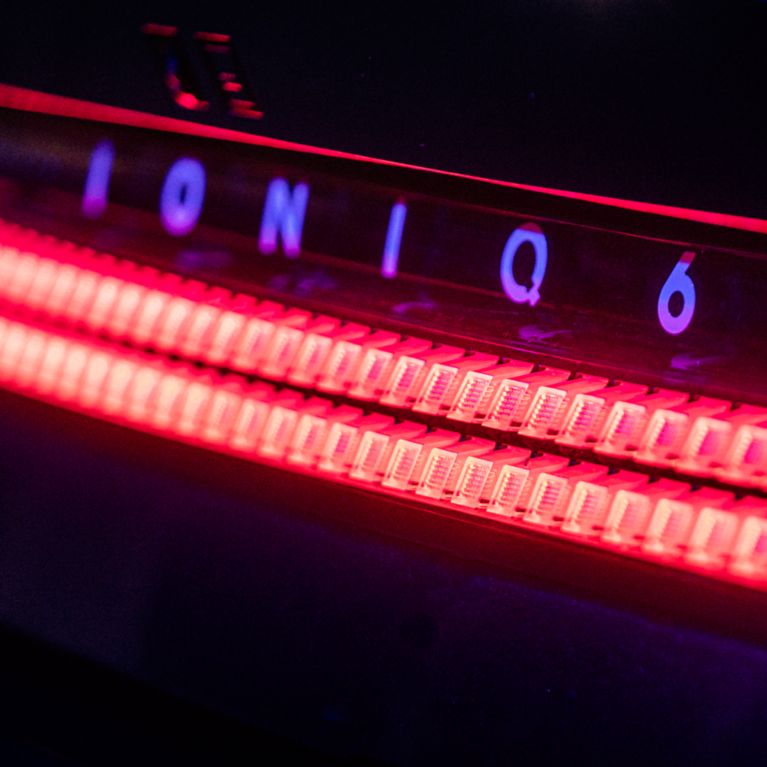- Award-winning photographer Esther Haase captured IONIQ 6 against the backdrop of a cyberpunk megacity to portray it as a vision of the future
- Haase took the cyberpunk theme from the idea of the car as part of yourself, found in works of science fiction
- IONIQ 6’s human-centric design and flow of its streamlined aesthetics was also represented through the use of a professional dancer
Hyundai Motor has commissioned award-winning photographer Esther Haase to capture the streamlined aesthetics and timeless, human-centric design of IONIQ 6, the second model in its BEV-dedicated IONIQ line-up brand. With the help of Head of Exterior Design Eduardo Ramírez, Haase dissects and analyses IONIQ 6’s unique design. She finds inspirations in the idea that the car as a part of yourself, which is often portrayed in works of science fiction, and consequently chooses to depict IONIQ 6 against the backdrop of a cyberpunk megacity. Here is the story behind the shoot.
A famous photographer points her camera at a car. It’s an electric car with a futuristic design. A memento of the past, sculpted for tomorrow. The photographer is Esther Haase – the car, IONIQ 6. And because every good picture tells a story, we want to tell how it all came about.
A design straight out of another era, sweeping lines as if drawn in a single stroke, the setting as surreal as a science fiction film. No one would be surprised if a Blade Runner were about to get into the car. Instead, there’s Esther Haase. She stands in front of IONIQ 6, thinks, reaches for the camera. Next to her, a dancer is sitting on the ground, stretching, getting ready for her assignment. The photographer captures IONIQ 6 in a cyberpunk world, in which this car and the dancer play the main roles.
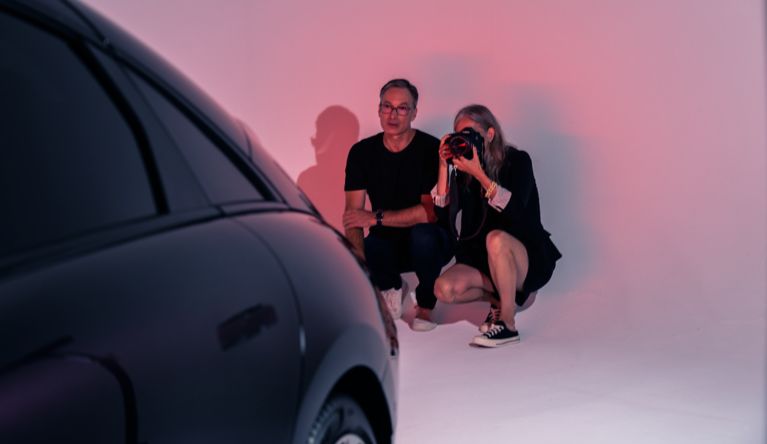
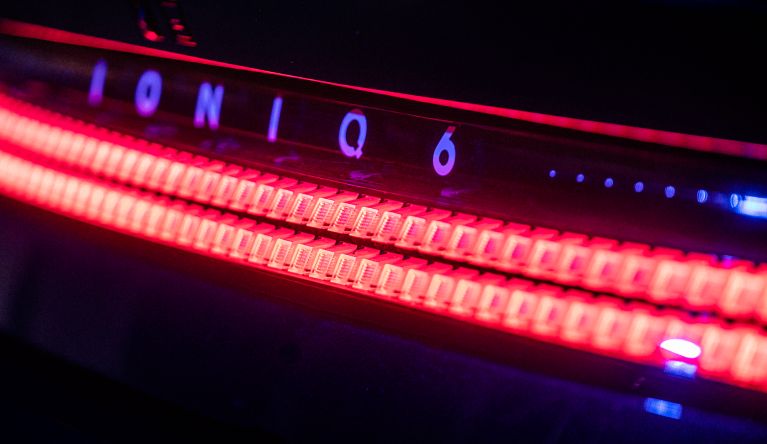
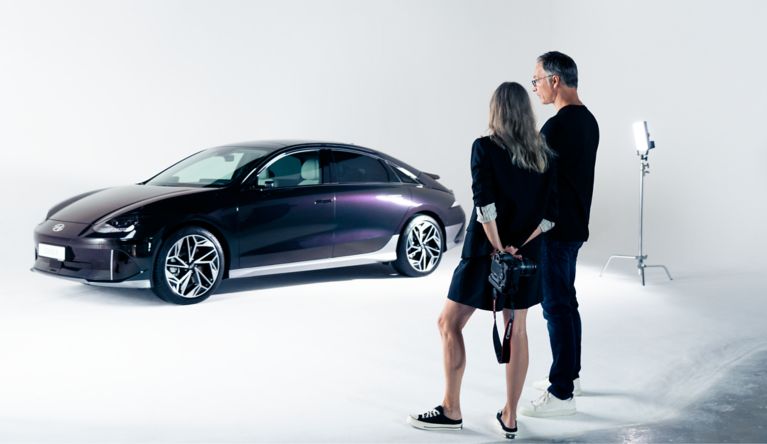
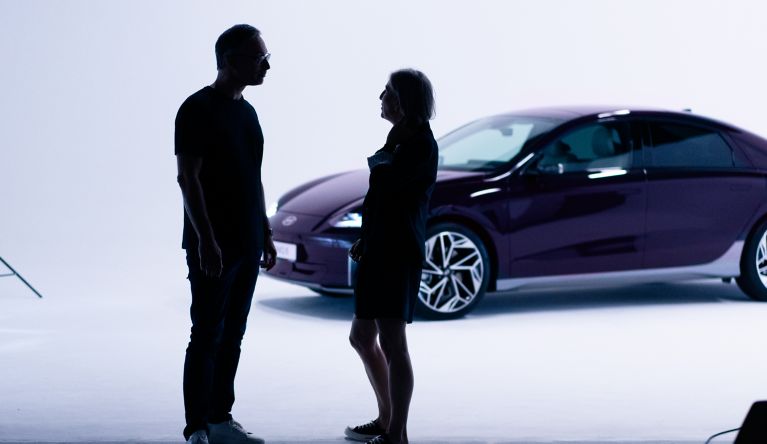
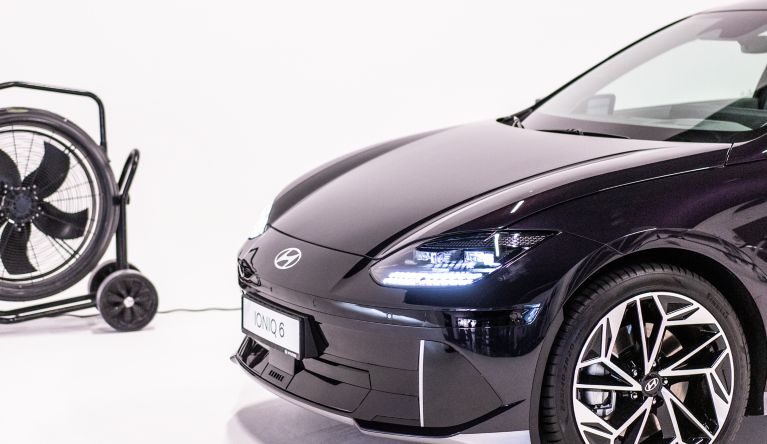
Let’s rewind the film a little: We’re in a photo studio in London, where Esther Haase encounters the all-new IONIQ 6 for the first time. Also there: Head of Exterior Design Eduardo Ramírez. Together, they brainstorm some initial ideas on how to capture the newest member of the IONIQ family on camera. IONIQ 5 paved the way, helping Hyundai position itself; IONIQ 6 was the next step, rethinking the meaning of mobility and positioning itself as a leader in future mobility solutions. The vision of tomorrow is one of modernity and humanity, of sustainability, of streamlined efficiency and personal space. Esther Haase approaches the vehicle, takes in the design, notices the details. The silhouette of the electric sedan recalls the aerodynamic forms of Streamline Moderne, a style of design, which emerged in the 1920s, that was primarily concerned with improving functionality and efficiency of things with reducing air resistance as a major result. With a side view that communicates performance and speed. “But that’s just the outward impression. I quickly discovered that it’s about how we live today, how we move about. It’s about modern mobility.”
Form follows function. That is the foundation of good design.
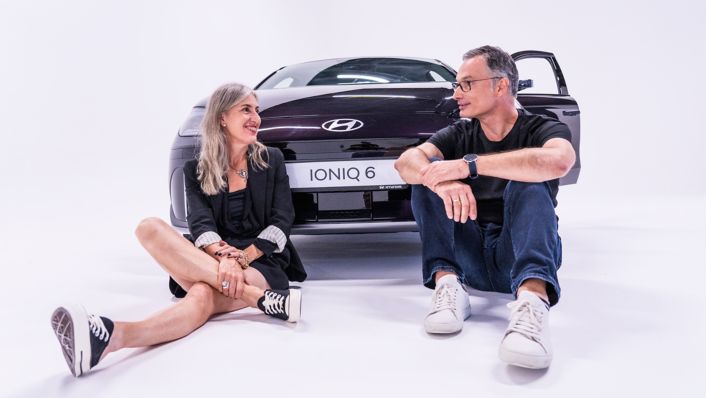
In this case, that means: what looks like performance primarily creates efficiency. The more easily the air can flow around the vehicle, the lower the energy consumption and the greater the range. And the vehicle architecture, with its long wheelbase and curved dome, allows for a completely new interior design. A comfortable and spacious hideaway on wheels, a private space in a modern world. “All that’s missing now is a house plant,” Esther Haase spontaneously remarks. She touches the interior trim, the seat covers. “We emphasised sustainability in every detail,” Ramírez explains. Recycled fishing nets for the carpeting, organic rubber for the dashboard, varnish made from vegetable oils for the door panels.
Of course, a car is much more than a functional object. It is an emotional product. Completely and utterly. Why is that? Because a car is a representation of yourself.
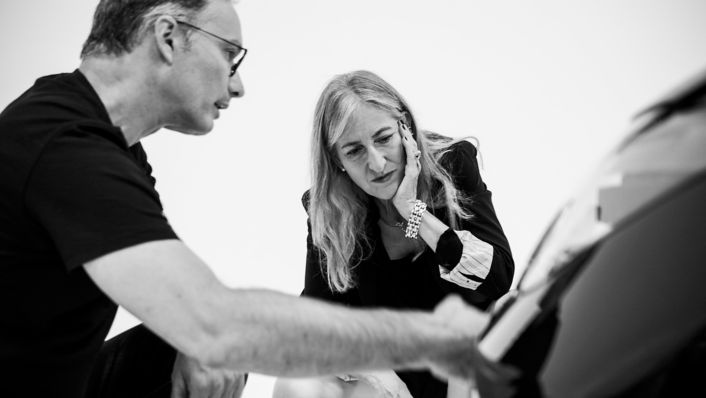
She reflects for a moment, then continues: “This idea that the car is a part of yourself can be found in lots of science fiction worlds, like in Transformers. And then, I’m standing in front of this car in the here and now, and I see a lot of future in it, I see this cyberpunk idea.” With megacities as the backdrop.
“I think of these incredible cities like Seoul with their bright worlds of light at night. And then, there’s this shiny metallic car, with interior lights that seem to give off sparks. You know Zoë Kravitz as Catwoman? She plays a very modern character, a woman who does her own thing. I like her strength, her independence, the whole rock ’n’ roll vibe. That’s the feeling I want to create.” The image begins to take shape: the vehicle merges with the city, the protagonist is an expressive dancer.
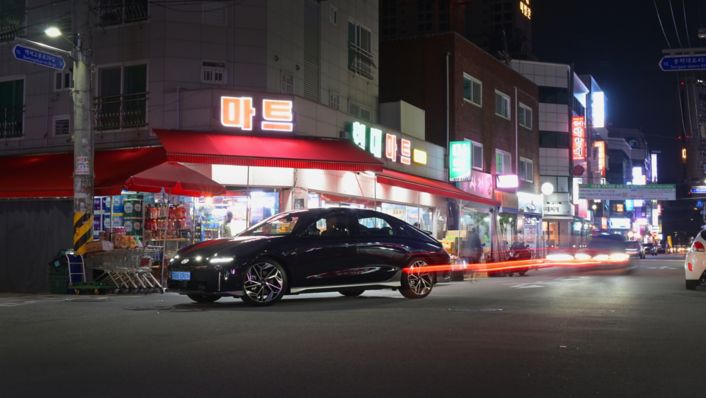
Esther Haase knows all about dance. She trained as a professional dancer herself and performed on stage for two years before turning to photography. “It’s about the power of movement. The readiness to leap. For me, that represents the shape of this car: the extension of the streamline through the leaping human body, in clothes that become part of this dynamic.”
Eduardo Ramírez wants to know where else she gets her inspiration from when she’s not having a futuristic car explained to her. “Films and books. I love stories. But I also find inspiration riding the underground. The metro and its architecture are inspiring in themselves. The long corridors, the escalators, the streams of people. I’m constantly observing – and subconsciously collecting ideas. Just yesterday, I saw three people sitting next to each other, three completely different characters but sitting side by side. That had become a piece of art just by itself. Like your sketches, for example. That’s exciting,” Esther Haase says, pointing to the drawings Eduardo Ramírez has brought with him, “These are real works of art. Are they shown in exhibitions?”
That however would not be their purpose. “They’re made to illustrate our ideas and are strictly confidential during the development process,” Ramírez explains. “But now that the car is being unveiled, we can show them.” And just like that, IONIQ 6 gets a new chapter. In cinematic terms: the prequel. But that’s another story.
About Esther Haase
Esther Haase was born in Bremen in 1966, the daughter of an artist and a professor of photography and design. After training professionally in classical dance, she performed on stage for two years before studying graphic design with a focus on photography. Since 1993, she has been dancing around the world with her camera and a head full of creative ideas. International commercial and publishing clients, exhibitions, and several publications of her own, including Sexy Book and Short Stories, have all contributed to Esther Haase’s growing success. For Hyundai, she drew inspiration from the all-new IONIQ 6 – and let her artistic vision transport the car into a cyberpunk world where streamlined aesthetics are brought into a new form of expression through the power of dance.
Disclaimer: CO2 and emissions data
- Electricity consumption combined for the Hyundai IONIQ 6 53 kWh with 2WD in kWh/100 km: 13.9; CO2 emissions combined in g/km: 0 (WLTP)
- Electricity consumption combined for the Hyundai IONIQ 6 77.4 kWh (18” alloy rims) with 2WD in kWh/100 km: 14.3; CO2 emissions combined in g/km: 0 (WLTP)
- Electricity consumption combined for the Hyundai IONIQ 6 77.4 kWh (20” alloy rims) with 2WD in kWh/100 km: 16.0; CO2 emissions combined in g/km: 0 (WLTP)
- Electricity consumption combined for the Hyundai IONIQ 6 77.4 kWh (18” alloy rims) with 4WD in kWh/100 km: 15.1; CO2 emissions combined in g/km: 0 (WLTP)
- Electricity consumption combined for the Hyundai IONIQ 6 77.4 kWh (20” alloy rims) with 4WD in kWh/100 km: 16.9; CO2 emissions combined in g/km: 0 (WLTP)

